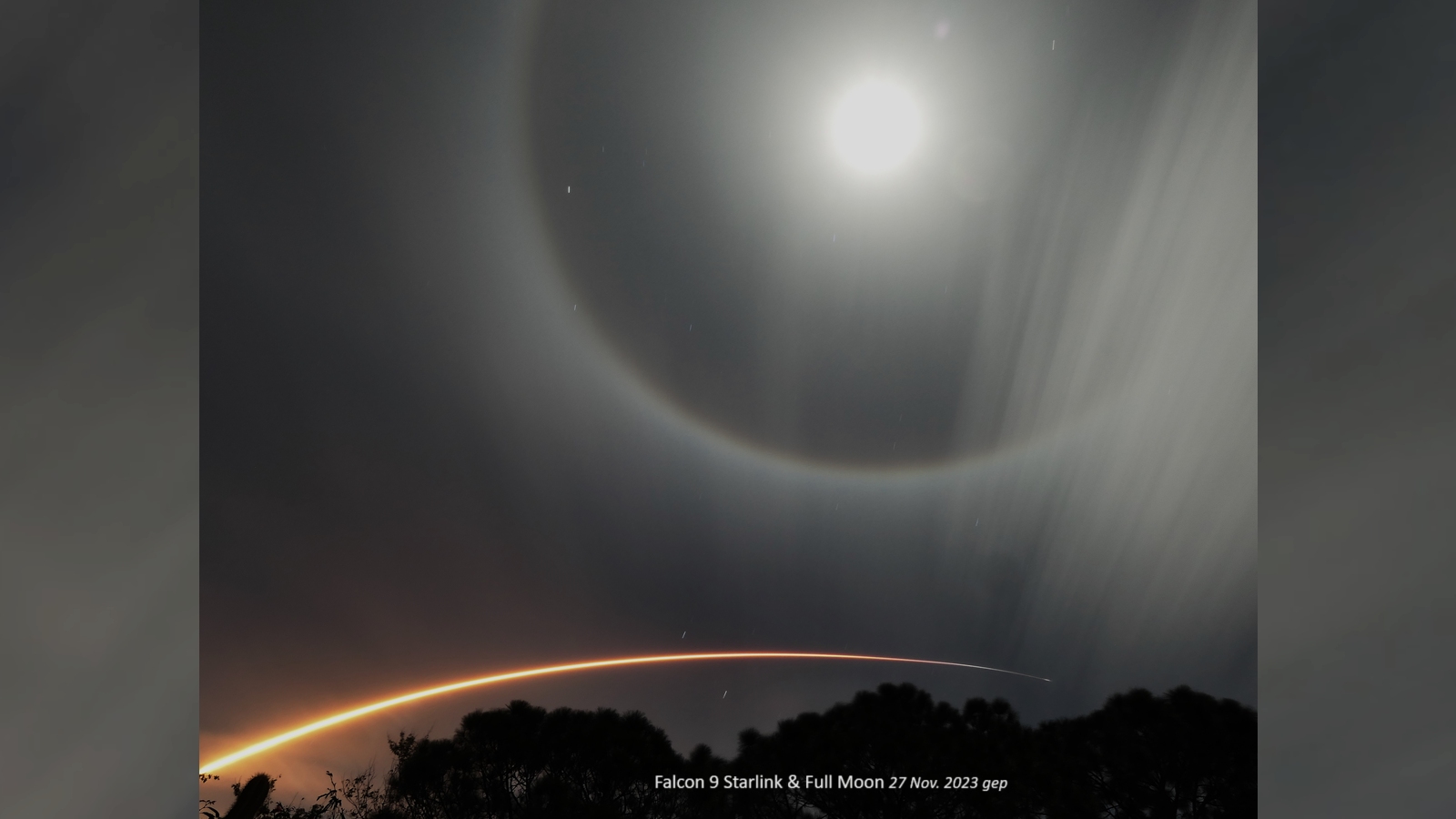
A SpaceX rocket recently created an ethereal halo of light around the full moon after punching a hole in a cloud full of ice crystals shortly after launch, a stunning new image shows. The incident was completely harmless but the photographer is concerned about the increasing number of launches from the company.
On Nov. 27, SpaceX launched one of its Falcon 9 rockets at 11:20 p.m. EST from Florida's Cape Canaveral Space Force Station, Live Science's sister site Space.com reported. The rocket, which was carrying 23 Starlink satellites, promptly made it out of Earth's atmosphere and safely delivered its payload into low-Earth orbit. At the same time, November's full moon, was also high in the sky.
Photographer Gilbert Plumer took a time-lapse image of the launch from Rockledge, around 20 miles (32 kilometers) from Cape Canaveral. The goal of the prolonged photo was to show the fiery trajectory of the ascending rocket, which is visible in the image as a curved orange line. But Plumer was also surprised to capture a rare ring of light that formed around the unusually bright moon shortly after the launch, Spaceweather.com reported.
The luminous halo is created by light reflecting off tiny ice crystals from cirrus clouds — thin and patchy clouds that form between 20,000 and 40,000 feet (6,100 and 12,200 meters) above Earth's surface. When the rocket punched a hole in the icy clouds, it altered the crystals' orientation in a way that light from the moon was refracted, or split, toward where Plumer was taking his photo, which created the ring effect, according to Spaceweather.com.
Related: SpaceX rockets keep tearing blood-red 'atmospheric holes' in the sky, and scientists are concerned

Similar light arcs and halos are also occasionally spotted around the sun when the ice crystals from cirrus clouds perfectly align between our home star and an observer.
It is unclear how long the halo persisted but the time-lapse image spans exactly 128 seconds, which means the ring formed at some point during this period.
In the past, Falcon 9 rockets have also been linked to other visual phenomena, including bright red streaks of aurora-like light that appear in the sky after the rockets open "holes" in the upper atmosphere, and whirlpool-like swirls of light, known as SpaceX spirals, which are created when frozen fuel is dumped from the rockets' spinning secondary boosters
These phenomena are becoming more common as the number of SpaceX launches increase so the company can expand its Starlink constellation, which aims to make the internet more widely accessible across the globe. But, despite setting the stage for some cool photos, these more frequent launches may not be such a good thing, Plumer told Live Science in an email.
"The Starlink schedule has increased so much that there is a launch every week," Plumer said. The increase in orbiting satellites is making the sky much brighter than it used to be, which is already causing problems for astronomers, he added
In July, new research revealed that Starlink satellites are also "leaking" radio waves that could hinder radio astronomers too.
The company has also been criticized because satellites can fall out of orbit and crash back to Earth during solar storms.







